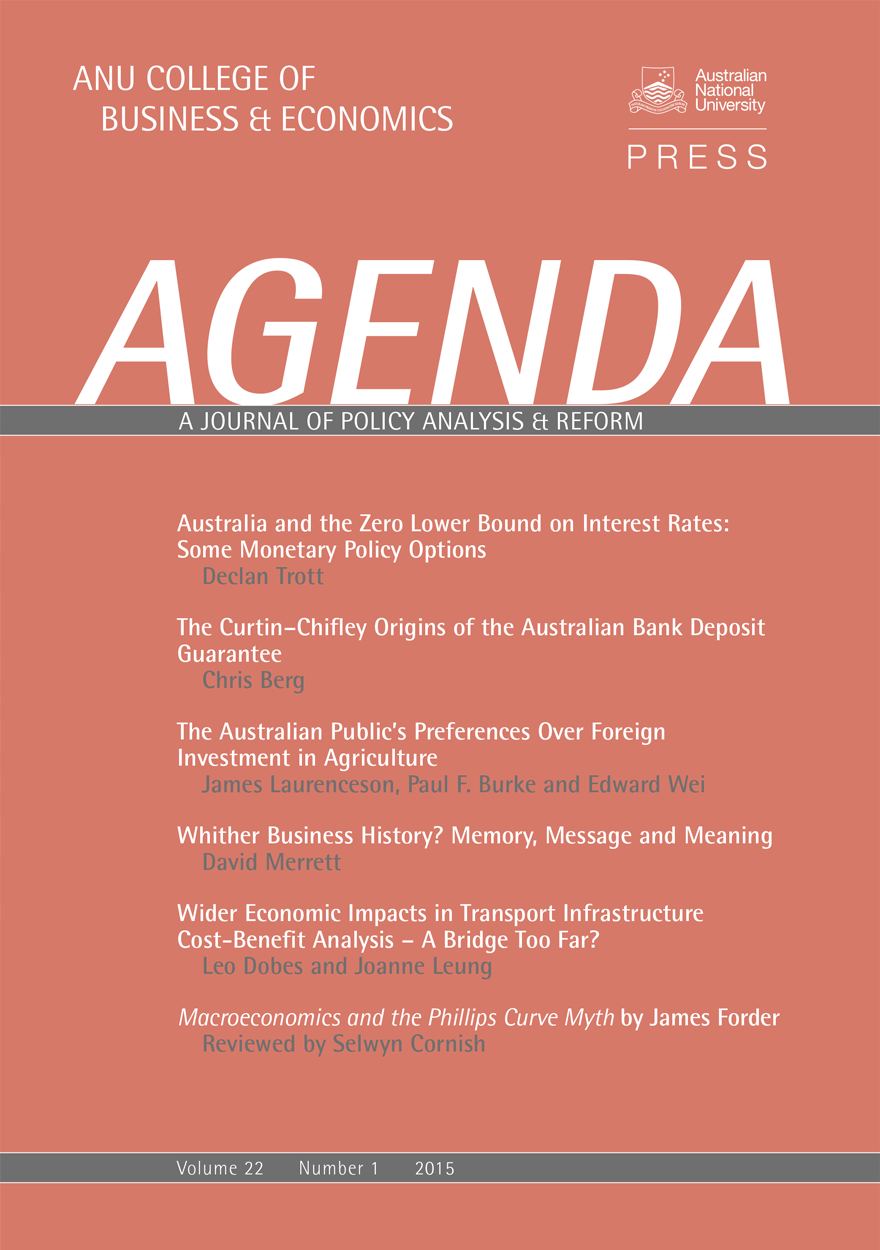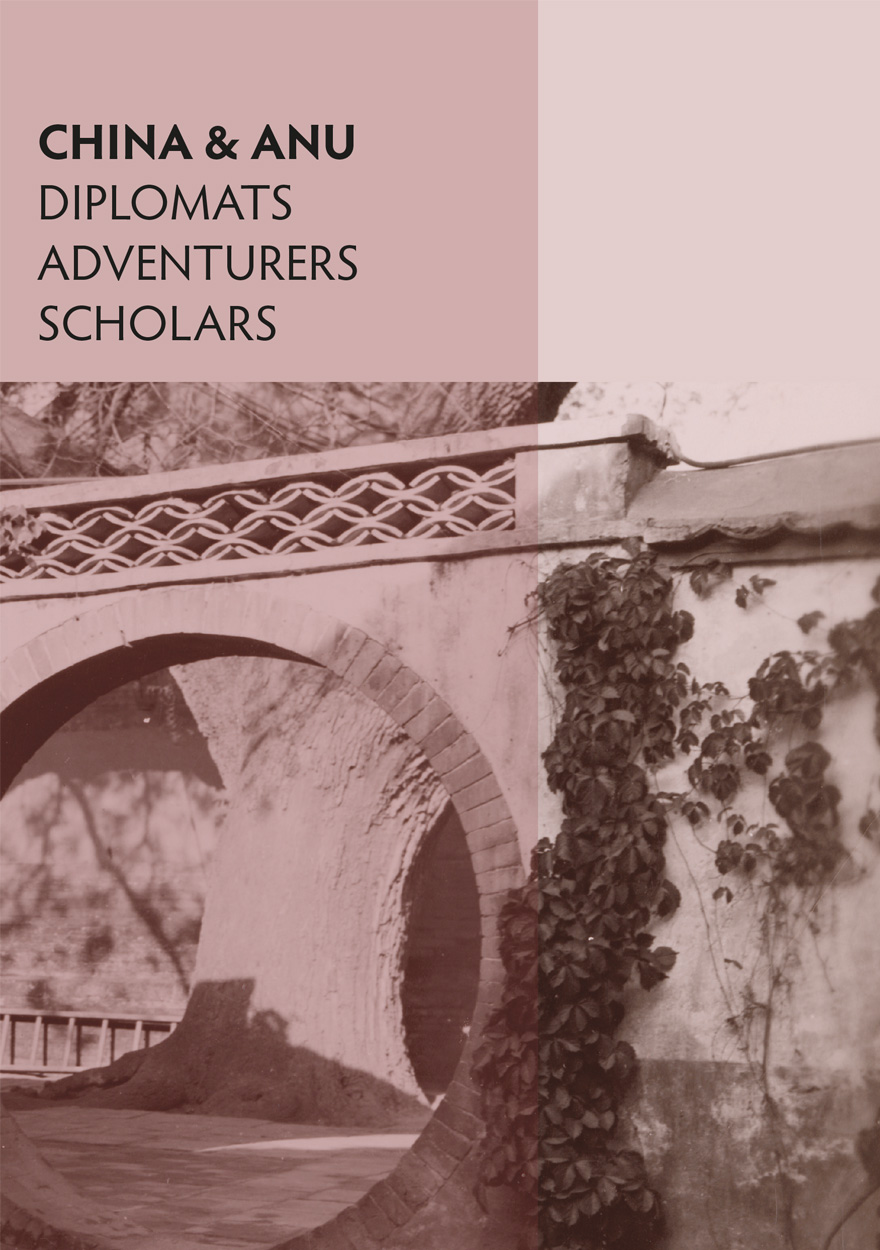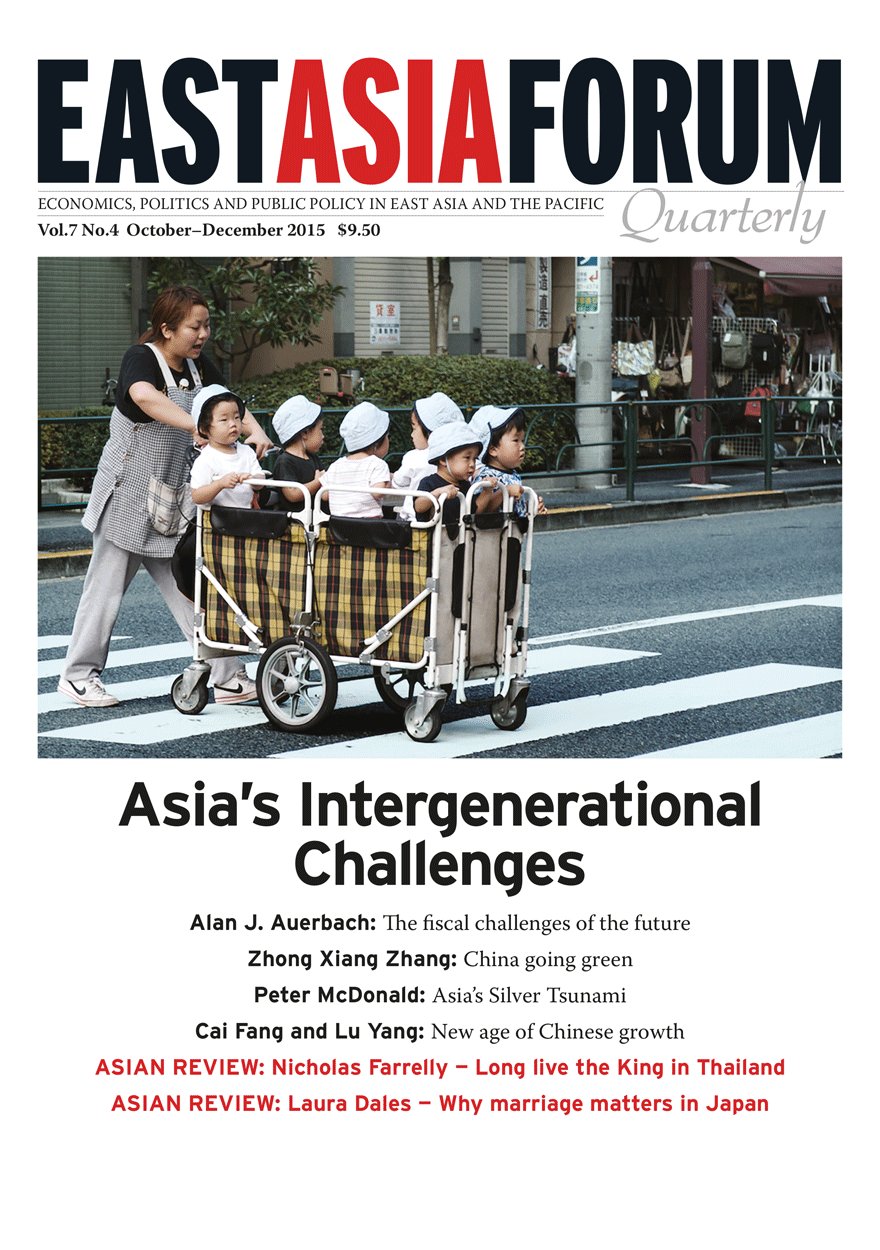Search titles
Displaying results 201 to 210 of 558.

Aboriginal History Journal: Volume 39 »
Edited by: Liz Conor
Publication date: December 2015
Volume 39 presents a special section on Aboriginal war service, edited by Allison Cadzow, Kristyn Harman and Noah Riseman. The contributors reappraise narratives and foster new avenues of inquiry, particularly on the impact of war service on families and communities, and explore how the entrance of Aboriginal men into Australian military service disrupted accustomed notions of defence of country. John Maynard extends this service back to the South African Anglo-Boer War. Andrea Gerrard and Kristyn Harman track the aftermath of the First World War for Tasmanian soldiers of Aboriginal descent. Philippa Scarlett challenges the ‘mateship myth’ of the Australian Imperial Force (AIF) of the First World War. The denial of repatriation benefits fuelled Aboriginal people’s post-war disenchantment and the political agitation of the 1920s and 1930s, as Jessica Horton shows. She finds it was demand for land exacerbated by the Soldier Settlement Scheme that precipitated the closure of reserves, creating a new ‘home front’ for Gunditjmara veterans resisting ongoing dispossession. Kristyn Harman looks at correspondence between white women and Aboriginal soldiers during the Second World War as overseen by the Aborigines Uplift Society’s national comforts auxiliary.
In the other articles in this volume, Sharon Delmege investigates policy implementation at Allawah Grove Native Settlement (1957–69). Anne O’Brien focuses on provisioning at Ernabella mission, South Australia in 1937. Steven Anderson looks at Indigenous executions in colonial South Australia, where public hangings were reintroduced, but only for Indigenous capital offenders. Greg Blyton casts light on the little-known story of Harry Brown, guide to Ludwig Leichhardt on two expeditions into the interior. Robin Barrington provides a corrective to the colonial visual archive in her examination of public constructions of Yamaji individuals by Daisy Bates and Alexander Morton.
Aboriginal History Inc. is a publishing organisation based in the Australian Centre for Indigenous History, Research School of Social Sciences, The Australian National University, Canberra.
For more information on Aboriginal History Inc. please visit aboriginalhistory.org.au.
Download for free
Not available for purchase

Agenda - A Journal of Policy Analysis and Reform: Volume 22, Number 1, 2015 »
Edited by: William Coleman
Publication date: December 2015
Agenda is a refereed, ECONLIT-indexed and RePEc-listed journal of the College of Business and Economics, The Australian National University. Launched in 1994, Agenda provides a forum for debate on public policy, mainly (but not exclusively) in Australia and New Zealand. It deals largely with economic issues but gives space to social and legal policy and also to the moral and philosophical foundations and implications of policy.
Subscribe to the Agenda Alerting service if you wish to be advised on forthcoming or new issues.
Download for free
Not available for purchase

China & ANU »
Diplomats, adventurers, scholars
Authored by: William Sima
Publication date: December 2015
The Pacific War and its aftermath radically transformed Australian perceptions of what was then called the ‘Near North’. Many recognised that in the postwar world Australia’s strategic interests and economic fortunes called for a new understanding of Asia and the Pacific. China loomed large in these calculations.
Based on extensive research and featuring rare archival documents and photographs, China & ANU introduces the diplomats, adventurers and scholars who contributed to Australia’s engagement with China, the ‘Chinese Commonwealth’ and our region from the 1940s-1950s. In particular, this book focusses on the interconnection between Australia’s first diplomat-scholars in China and the founding of Chinese Studies at the newly established Australian National University.

Journeys into the Rainforest »
Archaeology of Culture Change and Continuity on the Evelyn Tableland, North Queensland
Authored by: Åsa Ferrier
Publication date: November 2015
This monograph presents the results of archaeological research that takes a longitudinal approach to interpreting and understanding Aboriginal–European contact. It focuses on a small but unique area of tropical rainforest in far north Queensland’s Wet Tropics Bioregion, located within the traditional lands of the JirrbalAboriginal people on the Evelyn Tableland. The research integrates a diverse range of data sources: archaeological evidence recovered from Aboriginal open sites occupied in the pre- to post-contact periods, historical documents of early ethnographers, settlers and explorers in the region, supplemented with Aboriginal oral history testimony. Analyses of the archaeological evidence excavated from three open sites facilitated the identification of the trajectories of culture change and continuity that this investigation focused on: Aboriginal rainforest material culture and technology, plant subsistence strategies, and rainforest settlement patterns.
Analyses of the data sets demonstrate that initial use of the rainforest environment on the Evelyn Tableland occurred during the early Holocene period, with successful adaptation and a change towards more permanent Aboriginal use of the rainforest becoming established in the late Holocene period. European arrival and settlement on traditional Aboriginal land resulted in a period of historical upheaval for the Aboriginal rainforest people. Following an initial period of violent interactions and strong Aboriginal resistance from the rainforest, Jirrbal Aboriginal people continued to adapt and transform their traditional culture to accommodate for the many changes forced upon them throughout the post‑contact period.

East Asia Forum Quarterly: Volume 7, Number 4, 2015 »
Publication date: November 2015
East Asia Forum Quarterly grew out of East Asia Forum (EAF) online, which has developed a reputation for providing a platform for the best in Asian analysis, research and policy comment on the Asia Pacific region in world affairs. EAFQ aims to provide a further window onto research in the leading research institutes in Asia and to provide expert comment on current developments within the region. The East Asia Forum Quarterly, like East Asia Forum online, is an initiative of the East Asia Forum (EAF) and its host organisation, the East Asian Bureau of Economic Research (EABER) in the Crawford School of Economics and Government in the College of Asia & the Pacific at The Australian National University.
Download for free
Not available for purchase

The First Fleet Piano: Volume Two Appendices »
A Musician’s View
Authored by: Geoffrey Lancaster
Publication date: November 2015
During the late eighteenth century, a musical–cultural phenomenon swept the globe. The English square piano—invented in the early 1760s by an entrepreneurial German guitar maker in London—not only became an indispensable part of social life, but also inspired the creation of an expressive and scintillating repertoire. Square pianos reinforced music as life’s counterpoint, and were played by royalty, by musicians of the highest calibre and by aspiring amateurs alike.
On Sunday, 13 May 1787, a square piano departed from Portsmouth on board the Sirius, the flagship of the First Fleet, bound for Botany Bay. Who made the First Fleet piano, and when was it made? Who owned it? Who played it, and who listened? What music did the instrument sound out, and within what contexts was its voice heard? What became of the First Fleet piano after its arrival on antipodean soil, and who played a part in the instrument’s subsequent history? Two extant instruments contend for the title ‘First Fleet piano’; which of these made the epic journey to Botany Bay in 1787–88?
The First Fleet Piano: A Musician’s View answers these questions, and provides tantalising glimpses of social and cultural life both in Georgian England and in the early colony at Sydney Cove. The First Fleet piano is placed within the musical and social contexts for which it was created, and narratives of the individuals whose lives have been touched by the instrument are woven together into an account of the First Fleet piano’s conjunction with the forces of history.
View ‘The First Fleet Piano: Volume One’.

The First Fleet Piano: Volume One »
A Musician’s View
Authored by: Geoffrey Lancaster
Publication date: November 2015
During the late eighteenth century, a musical–cultural phenomenon swept the globe. The English square piano—invented in the early 1760s by an entrepreneurial German guitar maker in London—not only became an indispensable part of social life, but also inspired the creation of an expressive and scintillating repertoire. Square pianos reinforced music as life’s counterpoint, and were played by royalty, by musicians of the highest calibre and by aspiring amateurs alike.
On Sunday, 13 May 1787, a square piano departed from Portsmouth on board the Sirius, the flagship of the First Fleet, bound for Botany Bay. Who made the First Fleet piano, and when was it made? Who owned it? Who played it, and who listened? What music did the instrument sound out, and within what contexts was its voice heard? What became of the First Fleet piano after its arrival on antipodean soil, and who played a part in the instrument’s subsequent history? Two extant instruments contend for the title ‘First Fleet piano’; which of these made the epic journey to Botany Bay in 1787–88?
The First Fleet Piano: A Musician’s View answers these questions, and provides tantalising glimpses of social and cultural life both in Georgian England and in the early colony at Sydney Cove. The First Fleet piano is placed within the musical and social contexts for which it was created, and narratives of the individuals whose lives have been touched by the instrument are woven together into an account of the First Fleet piano’s conjunction with the forces of history.
View ‘The First Fleet Piano: Volume Two Appendices’.

They Came to Murramarang »
A History of Murramarang, Kioloa and Bawley Point
Edited by: Sue Feary, Alastair Greig
Authored by: Bruce Hamon
Publication date: October 2015
Bruce Hamon’s They Came to Murramarang, first published in 1994, provides a unique combination of local history and personal recollections from a writer who witnessed the transformation of the Murramarang region from the timber era to modern times. This new edition retains the original character of Bruce’s engaging prose with additional chapters relating to Bruce’s life, the writing of the book, the Indigenous history of the region and the transformation of the area since the book was written. The book has also been enhanced by the insertion of additional photographs.

Managing Under Austerity, Delivering Under Pressure »
Performance and Productivity in Public Service
Edited by: John Wanna, Hsu-Ann Lee, Sophie Yates
Publication date: October 2015
Contemporary public managers find themselves under pressure on many fronts. Coming off a sustained period of growth in their funding and some complacency about their performance, they now face an environment of ferocious competitiveness abroad and austerity at home. Public managers across Australia and New Zealand are finding themselves wrestling with expenditure reduction, a smaller public sector overall, sustained demands for productivity improvement, and the imperative to think differently about the optimal distribution of responsibilities between states, markets and citizens.
Given ever-shrinking resources, in terms of staffing, budgets and time, how can public managers and public services become more productive, more outcome-driven and more agile? How can we achieve better alignment between ever-growing citizen expectations and the realities of constrained service provision? What can we learn from the best combination of innovation and austerity already being delivered in other countries and sectors, including harnessing the grounded wisdom of frontline service delivery practitioners?
This book focuses on practical ways public managers at home and abroad are dealing with these shared dilemmas. It brings together renowned scholars in the fields of public sector productivity, performance management, ‘frugal innovation’ and budget stringency, with leading international and Australasian practitioners sharing their successes and challenges.

The Social Sciences in the Asian Century »
Publication date: September 2015
In this collection of essays, we reflect on what it means to practise the social sciences in the twenty-first century. The book brings together leading social scientists from the Asia-Pacific region. We argue for the benefit of dialogue between the diverse theories and methods of social sciences in the region, the role of the social sciences in addressing real-world problems, the need to transcend national boundaries in addressing regional problems, and the challenges for an increasingly globalised higher education sector in the twenty-first century. The chapters are a combination of theoretical reflections and locally focused case studies of processes that are embedded in global dynamics and the changing geopolitics of knowledge. In an increasingly connected world, these reflections will be of global relevance.



